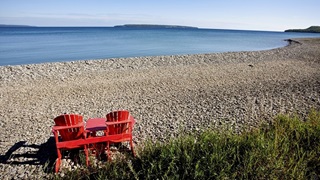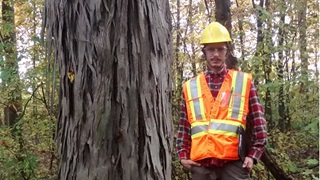Establishing 'islands of green'
Creating a wetlands project along Ontario bird migration corridor
For this Ontario conservationist, building wetlands involves as much art as it does science.
“It’s so much more than just digging a hole in the ground,” says Randall Van Wagner, environmental project coordinator for the Chatham, Ontario-based Lower Thames Valley Conservation Authority.
“It’s about planting trees, restoring habitat and ensuring that wildlife returns to the area.”
With $75,000 from Enbridge and additional money from other partners, the authority is working with Ducks Unlimited Canada, the provincial Ministry of Natural Resources, Forests Ontario, Ontario Power Generation and the local municipality of Chatham-Kent to develop new wetlands on a 140-acre farm field north of Lake Erie, along the Point Pelee bird migration corridor.
“Enbridge is funding a number of wetlands projects in the region, including one near Holiday Beach just south of Amherstburg, known for its raptors’ habitat, and one on the site of our Sarnia Solar Farm,” says Ian MacRobbie, general manager of Green Power and Transmission in Enbridge’s Eastern Region.
“We have two renewable energy operations in Chatham-Kent—the Tilbury Solar Farm and the Talbot Wind Farm. We thought this site was perfect for a wetland because it’s close to our wind farm, and will become an important resting spot for birds along a critical migration route.”
Darrell Randell of Ducks Unlimited Canada, who is providing both funding and advice on the project, indicates the site is a key piece of land to be restored, set aside and protected.
“It’s exciting . . . altogether, there are now hundreds of acres of protected land in the region, providing habitat for migratory birds and endangered plant species,” Randell notes.
Van Wagner is already leading the conversion of the site, focusing on 70 acres this year with the aim of converting the remaining 70 acres in 2016.
“First, we’ve got to make sure the soil contains clay otherwise it won’t retain water,” explains Van Wagner (an examination have indicated the site contains the appropriate clay-based soil to build wetlands).
Second, Van Wagner says, “the site is surveyed with GPS, and we identify the low spots—that’s where ponds can be built to capture surface water run-off.”
And because this is an agricultural area, drainage tiles have been buried in the ground to help farmers drain their fields, so the third stage involves locating and removing these tiles. “If we don’t do that, the ponds won’t hold their water,” Van Wagner notes.
At that point, the excavators enter the picture. “You’ve got to ensure the right topography, the correct elevation . . . and the berms that surround the ponds must have a nice undulation,” Van Wagner explains.
“Finally, we ensure the right habitat is put in place – we’ll be planting some 70,000 trees on this site.”
Then it’s nature’s turn to take over, and make good on the expression: “If you build it, they will come.” And the birds do come, along with a wide variety plant species, and fish carried as eggs on the birds’ feet and feathers.
“Wetlands are like islands of green—so important for migrating birds and for recovering endangered species,” says Van Wagner. “I’m so proud to be working on a project like this.”










